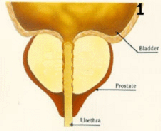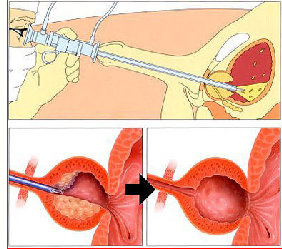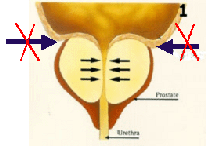Alpha blocker relaxes prostate
TURP surgery
(transurethral
resection of
prostate)
(transurethral
resection of
prostate)
Alpha-reductase therapy
for BPH
for BPH
Medical therapy for BPH
Therapy for Benign Prostate Hyperplasia (BPH)
Therapy is only necessary if the enlargement causes symptoms or complications. Otherwise, this condition can be monitored closely by your doctor.
Urinary stones
Kidney infections
Bladder infections
Bladder cancer
Erectile dysfunction
Urinary incontinence
Prostate cancer
Kidney cancer
Common urology conditions:
Alpha-blockers are a group of drugs that relaxes the muscles of the bladder neck (junction of bladder and prostate). This results in widening of the urethra opening and better flow of urine. Examples of alpha-blocker that are available in Singapore are Xatral and Hytrin. These drugs work almost immediately to provide relieve from obstructive symptoms. Side-effects are not common and may include giddiness, lethargy and low blood pressure.
Alpha reductase inhibitors act by decreasing the prostate size and resulting in widening of the urinary tract. Prostate volume can be reduced up to 30% with these medications. Examples of alpha reductase inhibitors are Avodart and Proscar. These drugs do not act immediately as the process of prostate shrinkage would take between 2 to 6 months. Results are sustainable over a longer period of time.

Surgical therapy for BPH
Surgery is only necessary when a patient does not respond to medical therapy or if he developes complications like recurrent urinary tract infections, bladder stones, urinary retention (inability to pass urine at all) or kidney failure.
TURP (transurethral resection of prostate) surgery is the most common surgery performed for BPH. A scope (tube) is passed throught the urinary tract from the external urinary opening to the prostate and bladder. It is usually done under regional (partial body) or general anaesthesia.

The entire urinary tract, prostate and bladder is first inspected via the cystoscope, a thin tube-like telescope device.
Having identified the offending prostate gland, the gland is resected, piece by piece with the scope as shown in the adjacent diagram. A clear channel for urine passage is created at the end of surgery. During the operation the bladder is flushed with a sterile solution to remove the loose pieces of prostate tissue.
Having identified the offending prostate gland, the gland is resected, piece by piece with the scope as shown in the adjacent diagram. A clear channel for urine passage is created at the end of surgery. During the operation the bladder is flushed with a sterile solution to remove the loose pieces of prostate tissue.
A catheter (a thin, flexible tube) is then inserted through the urethra into the bladder at the end of surgery to allow for continous irrigation. Continous irrigation is maintained for 24 hours after surgery to removed any blood clots. The operation itself usually takes about 1 hour to complete. Hospitalisation is between 1-2 days and recovery to normal activities takes less than a week.
The classical method of resection is with an electrical loop attached to the cystoscope. A wire loop attachment carrying an electric current is used to chip away at the enlarged prostate and a with a different electrical current is also used to stop the bleeding.
New resection techniques using plasmakinetic technology is gaining popularity. Plasmakinetic resection offers better bleeding control than traditional TURP resection.
The classical method of resection is with an electrical loop attached to the cystoscope. A wire loop attachment carrying an electric current is used to chip away at the enlarged prostate and a with a different electrical current is also used to stop the bleeding.
New resection techniques using plasmakinetic technology is gaining popularity. Plasmakinetic resection offers better bleeding control than traditional TURP resection.

Updated 23 Aug 09


Prostate



Green light laser surgery for prostate is another new development in the treatment of prostate enlargement. It uses a laser beam to
vaporize the prostate gland with minimal bleeding. Hence, catheter can be removed within 24 hours of surgery and the patient's stay
is hospital is significantly reduced.
Medical therapy is the first line of treatment for uncomplicated BPH. There are generally, two groups of drugs that are prescribed
for BPH (benign prostate enlargement), alpha-blocker and alpha reductase inhibitors. They can be used as a single drug or in combination.
S H HO UROLOGY AND LAPAROSCOPY CENTRE
